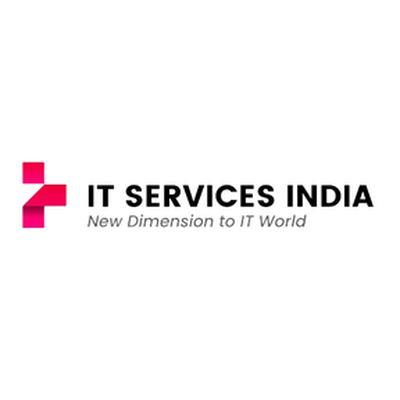Unleash Your App's Potential: Proven Strategies to Maximize Revenue and Growth
Body
In today’s fast-paced digital world, having a mobile app is just the beginning. The real challenge lies in maximizing its potential to generate revenue and achieve sustainable growth. In this blog post, IT Services India will explore proven strategies that can help you boost your app’s revenue and growth, with a focus on mobile app development, Android app development, and iOS app development.
Understanding the Mobile App Market
Before taking a look into strategies, it’s necessary to understand the landscape of the mobile application market. According to Statista, global mobile app revenues are projected to reach over $522 billion by 2024. With millions of apps available in the App Store and Google Play, competition is fierce. Out of every 100 apps launched, only 0.5% will succeed in generating significant revenue. This statistic underscores the importance of having a solid monetization strategy in place.
1. Choose the Right Monetization Model
The initial step in maximizing your applications revenue is selecting the right monetization model. Some popular options are as below:
- Freemium Model: This model allows users to download the app for free but charges for premium features or content. It’s effective for attracting a large user base while growing revenue from those willing to pay for additional functionality.
- Subscription Model: Users pay a recurring fee (monthly or annually) for access to premium content or features. This model gives a stable revenue stream and encourages long-lasting user engagement.
- In-App Purchases: This model allows users to buy virtual goods or additional features within the app. It works well in gaming apps but can also be applied to productivity or lifestyle apps.
- Ad-Based Revenue: Displaying ads within your app can generate income based on impressions or clicks. Partnering with ad networks like Google AdMob can help you monetize without charging users directly.
Pros and Cons of Monetization Models
|
Monetization Model |
Pros |
Cons |
|
Attracts a large user base; potential for upselling |
May lead to low conversion rates |
|
|
Subscription |
Steady revenue stream; encourages loyalty |
Requires ongoing value delivery |
|
High earning potential; flexible pricing |
Can frustrate users if not implemented well |
|
|
Ad-Based Revenue |
No cost to users; easy integration |
Can disrupt user experience; dependent on user engagement |
2. Focus on User Experience (UX)
A positive user experience is crucial for retaining users and encouraging them to spend money within your app. Here are some tips to enhance UX:
- Intuitive Design: Ensure your app is easy to navigate with a clean interface. Users should be able to find what they need without confusion.
- Onboarding Process: Implement an effective onboarding process that guides new users through your app’s features and benefits. A well-designed onboarding experience can significantly improve retention rates.
- Performance Optimization: Regularly test and optimize your app for speed and performance. Slow-loading apps can lead to high abandonment rates.
3. Personalize User Engagement
Personalization is key to improving user engagement and increasing monetization opportunities:
- User Data Analysis: Utilize analytics tools to gather data on user behavior and preferences. This information can help you tailor content, recommendations, and offers specifically for each user.
- Targeted Notifications: Use push notifications strategically to inform users about new features, promotions, or personalized offers based on their usage patterns.
4. Implement Effective Marketing Strategies
To maximize revenue and growth, you need effective marketing strategies that drive downloads and user engagement:
- App Store Optimization (ASO): Optimize your app’s title, description, keywords, and visuals to improve its visibility in app stores. Research relevant keywords that potential users might search for related to mobile app development or specific functionalities.
- Social Media Marketing: Leverage social media platforms like Facebook, Instagram, and Twitter to promote your app. Share engaging content that highlights your app's features and benefits.
- Influencer Partnerships: Collaborate with influencers in your niche who can promote your app to their followers, helping you reach a broader audience.
5. Utilize In-App Advertising Wisely
If you choose an ad-based monetization model, consider these best practices:
- Ad Placement: Strategically place ads within your app so they don’t disrupt the user experience. For example, consider using banner ads at the bottom of the screen or interstitial ads during natural breaks in usage.
- Ad Types: Experiment with different ad formats such as video ads or native ads that blend seamlessly with your content for better engagement rates.
6. Offer Value Through Content
Providing valuable content can enhance user satisfaction and encourage spending:
- Regular Updates: Keep your app fresh by regularly adding new features or content that adds value for users.
- Exclusive Content: Consider offering exclusive content or features for paying subscribers or premium users to incentivize upgrades.
7. Monitor Analytics Continuously
Data-driven decision-making is crucial for optimizing your monetization strategy:
- User Behavior Tracking: Use analytics tools like Google Analytics or Firebase to track user behavior within your app. Identify which features are popular and which ones may need improvement.
- A/B Testing: Experiment with different pricing models, features, or marketing strategies through A/B testing to determine what resonates best with your audience.
8. Engage Your Users Post-Launch
Your relationship with users shouldn’t end once they download your app:
- Feedback Mechanisms: Implement feedback mechanisms within your app that allow users to share their thoughts easily. Use this feedback to make improvements.
- Community Building: Create a community around your app through forums or social media groups where users can interact with each other and share tips or experiences.

9. Build Strategic Partnerships
Collaborating with other businesses can open up new revenue streams:
- Cross-Promotions: Partner with complementary apps for cross-promotional opportunities that benefit both parties by sharing user bases.
- Affiliate Marketing: Consider implementing affiliate marketing programs where users earn rewards for referring others to download your app.
10. Invest in Quality Development
Whether you’re working with an internal team or hiring a mobile app development company, investing in quality development is essential:
- Choose the Right Agency: If you're looking for a mobile app development agency, ensure they have experience in both Android and iOS platforms. Check their portfolio and client testimonials before making a decision.
- Focus on Scalability: Develop an architecture that allows for easy scalability as your user base grows. This ensures that performance remains optimal even as demand increases.
11. Explore Emerging Technologies
Stay ahead of the competition by incorporating emerging technologies into your mobile application:
- Artificial Intelligence (AI): Utilize AI algorithms for personalized recommendations based on user behavior patterns.
- Augmented Reality (AR): If applicable, integrate AR features that enhance user interaction—especially effective in retail or gaming applications.
12. Optimize Pricing Strategies
Your pricing strategy plays a crucial role in maximizing revenue:
- Competitive Analysis: Research what similar apps charge for their services and adjust your pricing accordingly while ensuring it reflects the value provided.
- Flexible Pricing Models: Consider offering tiered pricing plans that cater to different user segments—this could include basic free access with optional premium upgrades.
13. Focus on User Retention Strategies
Acquiring new users is important, but retaining them is equally critical:
- Loyalty Programs: Implement loyalty programs that reward repeat customers with discounts or exclusive access—this encourages ongoing engagement with your app.
- Regular Communication: Keep lines of communication open through newsletters or updates about new features—this keeps users informed and engaged over time.
14. Leverage User-generated Content
Encouraging users to create content related to your app can enhance engagement:
- Contests & Challenges: Host contests where users submit their own content (like photos or videos) using your app—this not only promotes engagement but also serves as organic marketing material.
15. Establish Clear Brand Identity
A strong brand identity helps differentiate your app from competitors:
- Consistent Messaging: Ensure that all marketing materials reflect consistent messaging about what makes your application unique.
16. Utilize Customer Support Effectively
Providing excellent customer support can lead to higher satisfaction rates:
- Multiple Support Channels: Offer various support channels such as chatbots, email support, FAQs, and live chat options—this ensures that users can easily get help when needed.
17. Create Engaging Visual Content
Visual appeal plays a significant role in attracting users:
- High-quality Graphics & Videos: Use high-quality graphics and promotional videos that showcase the best aspects of your application—this helps capture potential users' attention quickly.

18. Stay Updated on Industry Trends
Keeping up-to-date with industry trends helps ensure relevance:
- Follow Industry Leaders & Blogs: Regularly read blogs related to mobile app development trends—this helps you stay informed about new technologies and market shifts.
19. Plan for Future Updates
Your work doesn’t stop after launching the application:
- Regular Feature Enhancements: Plan regular updates based on user feedback—this keeps existing users engaged while attracting new ones.
20. Network Within the Industry
Networking can lead to valuable partnerships:
- Attend Industry Events & Conferences: Participate in events related to mobile technology—this helps build connections with other professionals who may offer collaboration opportunities.
Conclusion
Maximizing revenue and growth from a mobile application requires strategic planning, continuous optimization, and an unwavering focus on delivering value to users.











Comments